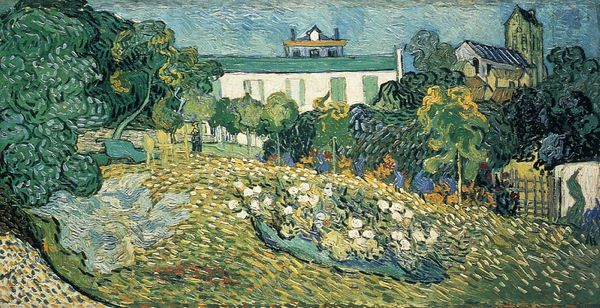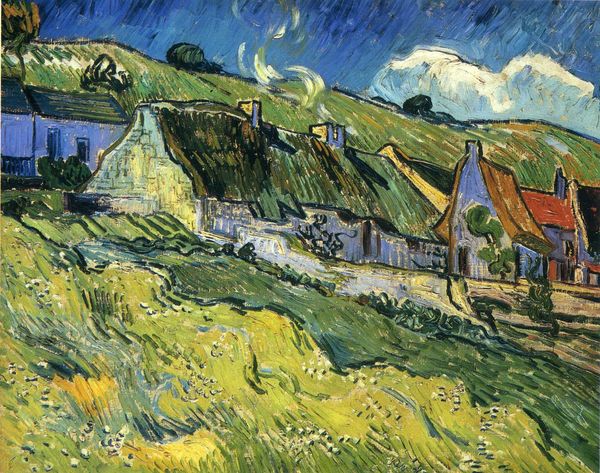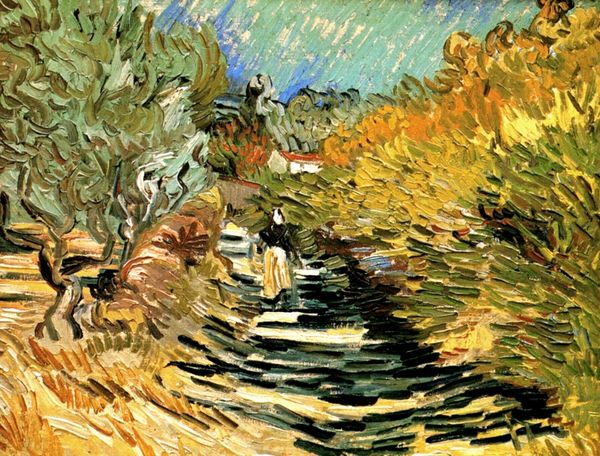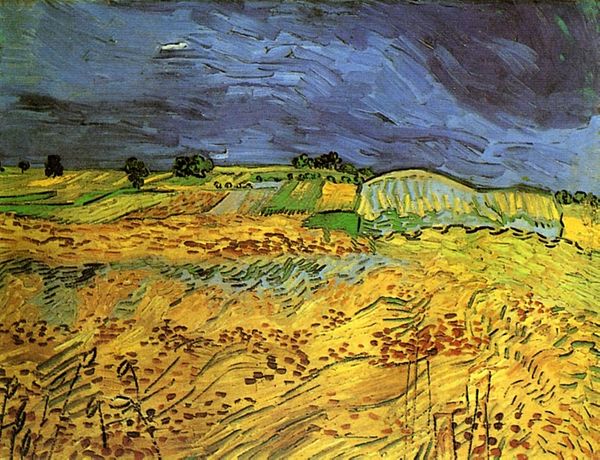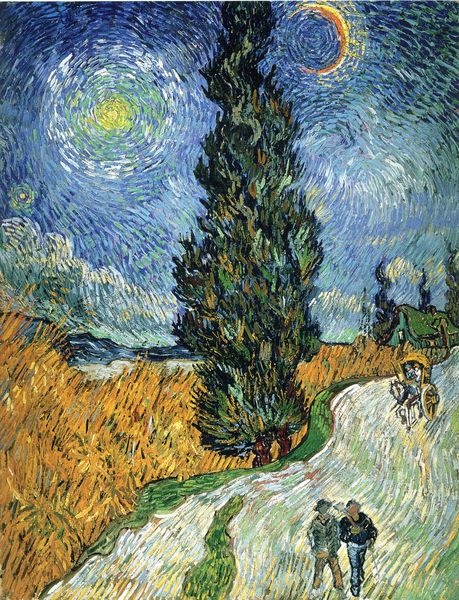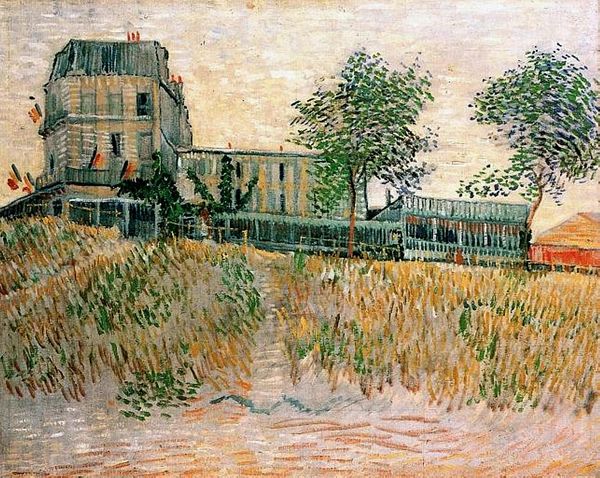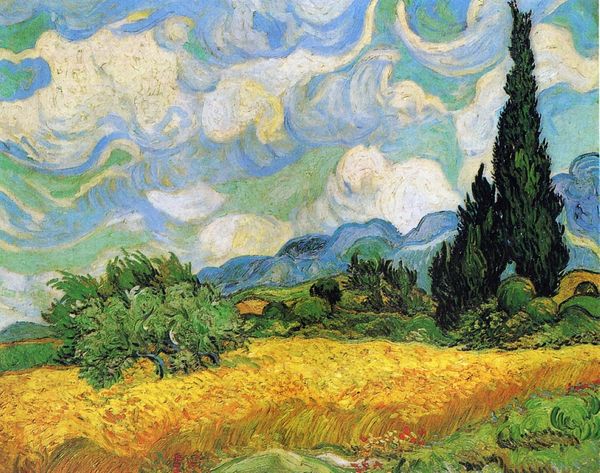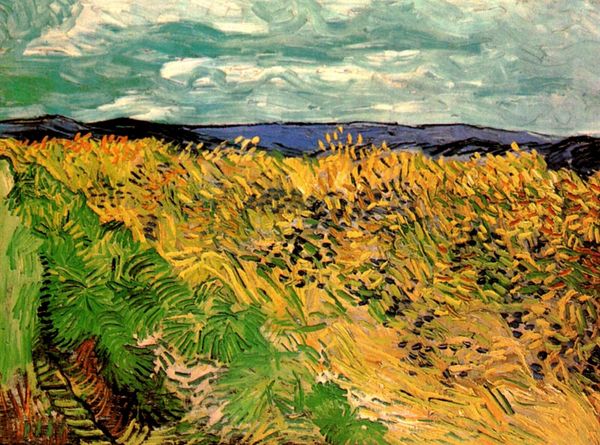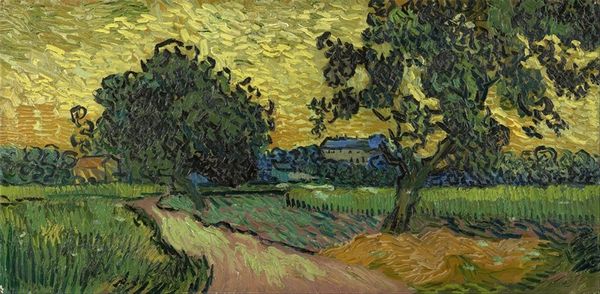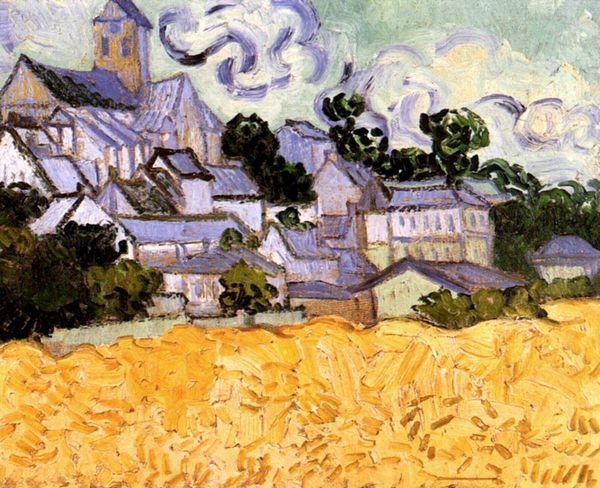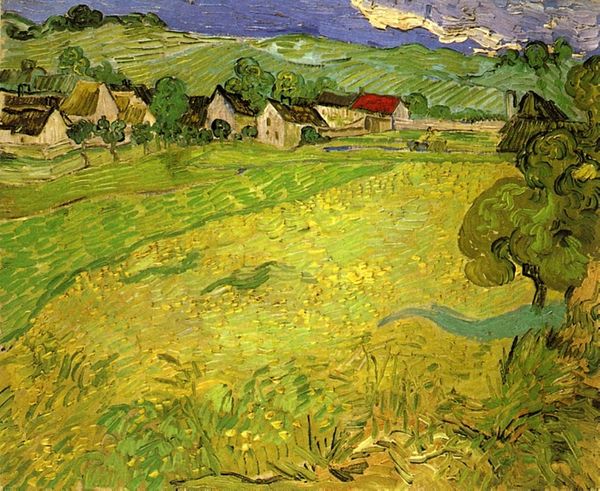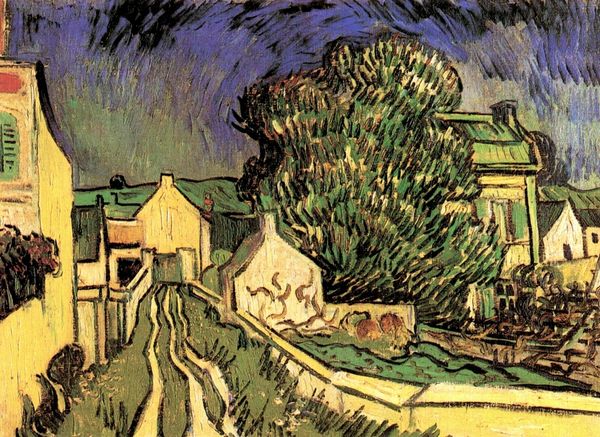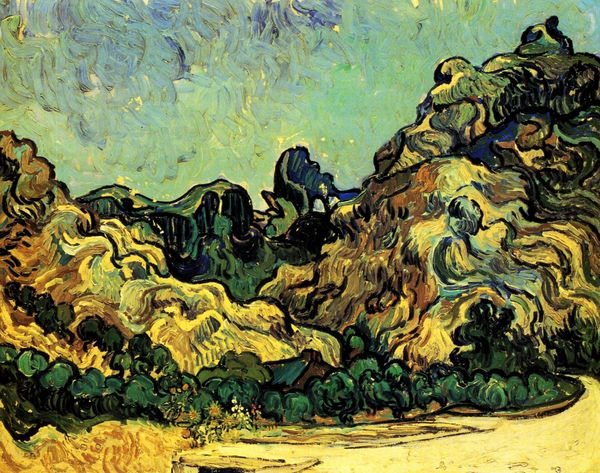
painting, oil-paint
#
painting
#
oil-paint
#
landscape
#
naive art
#
cityscape
#
post-impressionism
Dimensions: 44.5 x 60 cm
Copyright: Public domain
Editor: This is Van Gogh’s “View of the Church of Saint-Paul-de-Mausole,” painted in 1889 with oil on canvas. I’m immediately struck by how the swirling brushstrokes create such a palpable sense of movement. What historical narratives do you see woven into this landscape? Curator: The painting's vibrant, almost frenetic, energy contrasts starkly with the setting. Van Gogh was, at this time, voluntarily confined to the Saint-Paul-de-Mausole asylum. Consider the power dynamics at play – an individual deemed 'mad' by societal standards, painting a symbol of societal structure, the church. Does the dynamism of the brushstrokes reflect internal turmoil rebelling against the imposed order? Editor: That's fascinating. So, you're saying the visible brushstrokes might be interpreted as Van Gogh's individual expression pushing back against societal expectations of conformity. Do you think his choice of such vivid colors adds another layer to that interpretation? Curator: Absolutely. The bold yellows and blues weren't necessarily representative of the scene's reality but, rather, the artist's emotional reality. These intense hues, divorced from naturalistic representation, could symbolize the heightened, perhaps distorted, perception of someone marginalized by society. How might this challenge traditional landscape painting that often prioritizes objective observation? Editor: I see! It shifts the focus from a literal depiction of a scene to an exploration of internal experience, which resonates with contemporary ideas about mental health and challenging social norms. It really makes you reconsider the definition of 'landscape'. Curator: Precisely. And think about the implications: can a landscape be a portrait of a mind, a political statement about belonging and alienation? Editor: This has really opened my eyes to the potential for art to be more than just aesthetically pleasing; it can be a powerful form of social commentary and resistance. Curator: And for fostering dialogue and challenging pre-conceived notions on social issues.
Comments
No comments
Be the first to comment and join the conversation on the ultimate creative platform.
